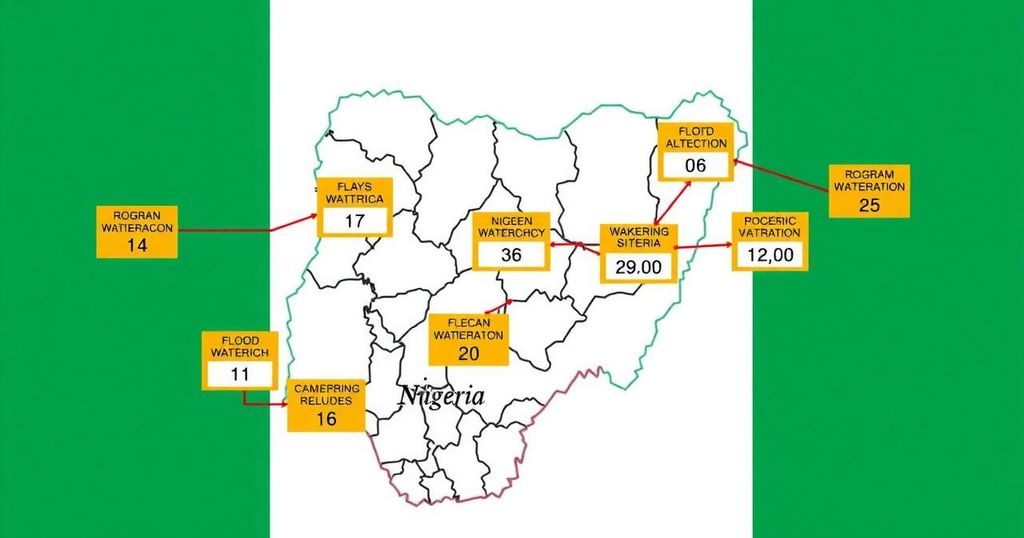Nigeria Prepares for Flood Risks as Cameroon Initiates Water Release from Lagdo Dam
Summary
Nigeria’s hydrological agency, NIHSA, has issued a warning for potential flooding in 11 states following the release of water from Cameroon’s Lagdo dam amid severe rainfall across West and Central Africa. The agency has urged federal and state authorities to enhance preparedness measures to mitigate flooding impacts. Historical flooding incidents, notably in 2022, have highlighted Nigeria’s vulnerability and infrastructural challenges in water management.
LAGOS (Reuters) – The Nigeria Hydrological Services Agency (NIHSA) has issued a warning of potential flooding across 11 states, following Cameroon’s announcement of controlled water releases from the Lagdo dam. This decision is a response to the recent heavy rainfall observed in West and Central Africa, raising concerns particularly for the northeastern region of Nigeria. The warning comes amid ongoing severe flooding incidents in Borno State, where a dam failure has already resulted in significant water overflow. According to a spokesperson for Cameroon’s utility company, ENEO, while there is a concern about possible flooding from the dam, as of Wednesday morning, the reservoirs had not yet been opened. NIHSA has emphasized the necessity for the Lagdo dam operators to regulate their water discharge in order to prevent overwhelming the Benue River downstream as it flows into Nigerian territory. The states identified as being at risk include Benue, Nasarawa, and Kogi situated in the agriculturally significant central belt, along with southern oil-producing regions such as Bayelsa, Delta, and Rivers. The agency has called upon both federal and state authorities to enhance their vigilance and implement necessary preparedness strategies to mitigate the impacts of any potential flooding resulting from increased river flow levels during this critical period. The historical context of Nigeria’s vulnerability to flooding is underscored by the tragic events of 2022, which saw over 600 fatalities and extensive damage to farmlands, primarily attributed to heavy rain and water releases from the Lagdo dam. Earlier evaluations indicated that Nigeria’s incomplete dam project, which was intended to serve as a buffer for flooding events originating from Cameroonian dams, significantly exacerbated the situation. It is imperative to note that Nigeria, as Africa’s most populous nation, frequently grapples with flooding incidents, a situation intensified by inadequate infrastructure and ineffective planning.
The alarming flood risks in Nigeria are linked to the operational management of the Lagdo dam in Cameroon, particularly during periods of heavy rain. The Benue River, which flows from Cameroon into Nigeria, is a critical waterway that can easily overflow in response to changes in water levels from upstream sources. Past incidents, particularly in 2022, have highlighted the devastating consequences of flooding, resulting in loss of life and extensive damage to agriculture within Nigeria. The current warning from NIHSA serves as a proactive measure aimed at preparing the affected states for possible flooding, stemming from increased water flow from the Lagdo dam.
In conclusion, the warning issued by the Nigeria Hydrological Services Agency regarding the potential for flooding in 11 states underscores the critical need for preparedness and infrastructural development to mitigate flood risks. Historical evidence from past flooding disasters highlights the effectiveness or lack thereof in managing water resources between Nigeria and Cameroon. The necessity for collaborative regional strategies is paramount to safeguard against future flooding incidents that could have devastating impacts on communities and livelihoods.
Original Source: www.usnews.com








Post Comment